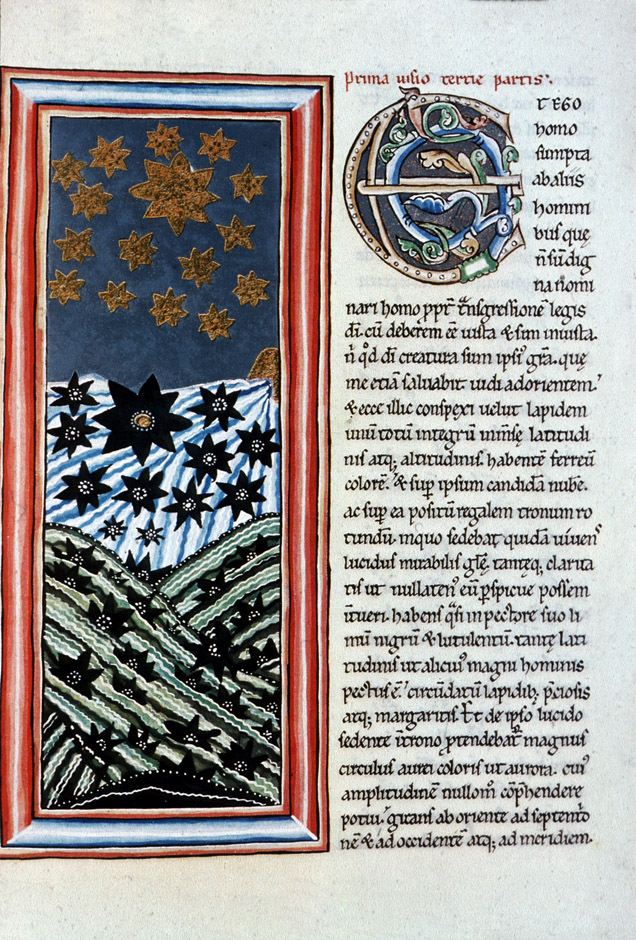Hildegard Bingen Scivias Pdf

The Early Prophecies of Hildegard of Bingen Charles M. Czarski, PhD The twelfth-century Benedictine author Hildegard of Bingen (1098-1179) has long been famous for her first major work known as the Scivias, a description of her visions and her commentaries on them which she wrote between 1141 and 1151. The purpose of this paper is to analyze a. Scivias hildegard pdf With acknowledgements to Barbara Newman et al. Book One - The Creator and Creation. Hildegard scivias translation Hildegard sees.Scivias is an. The Early Prophecies of Hildegard of Bingen Charles M. First appeared in a vision recorded in the Scivias.14 Hildegard stated the. Hildegard (1098-1179) was a Benedictine abbess who documented her allegorical visions and apocalyptic prophecies in text and illuminations. Her most famous work, written over the course of ten years (1141-51). Is Scivias (short for 'Scito vias Domini,' 'know the ways of the Lord,'). In this excerpt, Hildegard describes her.
The Liber Scivias is the first theological-cosmological work by Hildegard of Bingen (1098-1179), a woman whose character and ability has earned her an appreciation which is unprecedented. The manuscript – to be considered as a guide – takes into consideration the concepts of Universe and man, respectively representing macrocosm and microcosm, and deals with the process of salvation which can only be attained through redemption. Hildegard of Bingen - An Extraordinary Woman The figure of Hildegard resonates through the pages of the Liber Scivias manuscript – on which she worked for about 10 years – that is testament to her role as prophet and mystic.
Indeed, she was an extraordinary woman in that she experienced visions which – as she claims herself – did not receive in a dream or sleep but in a conscious state. Iconographic Apparatus of the Lavish Liber Scivias A vision introduces each section, focusing on the interaction between God and man, who aiming to redeem himself finds his way back to his creator. The Liber Scivias with its 35 exquisitely illuminated miniatures was created in the monastery of Rupertsberg and it is justly considered one of the most lavish and sumptuously decorated medieval manuscripts. The codex makes sure to connect men with the transcendent beyond they long for; it represents the hope for men to live a meaningful existence. Troubled History of the Manuscript Fortunately, the manuscript has survived time with help of abbess Regentrudis Sauter, who thought of the Liber Scivias as the perfect artefact to dedicate for the golden anniversary of the order. For six years, from 1927 to 1933, the manuscript was relocated in the abbey of St. Hildegard to be copied by four nuns who, transcribed the original text and copied the miniatures.
This instance was considered to be very fortunate when the original manuscript went lost during the Second World War, thus leaving the world with only the 19th century copy. Binding description The nuns created a version of the cover which did not reflect the actual state of the cover at the time it went missing.
Fortunately, a record from the year 1931 supplies a detailed description of the original binding providing the number of existing embossments and fittings, as well as the surviving clasps on the leather cover. How To Install Fitted Wardrobes Liverpool. We are also informed that the singular stamp used on the Liber Scivias is identical to the one on the so-called Giant Codex of Hildegard of Bingen (Hs.2).
Scivias, an illustrated tome,, and perhaps the. Scivias, (“Know the Ways”) describes 26 of Hildegard’s most vivid visions. How To Install Mta Sa Mods Ru. The book deals with the interconnectivity of man in the universe; the concept that man represents a microcosm of the cosmic macrocosm, in other words, the belief that the universe exists simultaneously within each of us, while also encompassing everything else externally.
The Story Behind Scivias Through Scivias, philosophy full of archetypal images and a hero’s journey, wherein the soul predates the body and persists beyond experience on earth. Hildegard’s descriptive, visionary recitation of her visions framed a powerful and compelling perspective of existence and divinity that impressed many who would discover her work, including Carl Jung, who drew much from Scivias to inform his thinking. Hundreds of years after Scivias, Hildegard’s mandala images would be a reference point for Jung’s process of individuation, described in his Red Book. Scivias is renowned for its 35 images, or Illuminations, accompanying the descriptions of Hildegard’s visions as part of the original illuminated Rupertsberg manuscript. The images have become, perhaps, more popular than the actual narrative contained within Scivias.